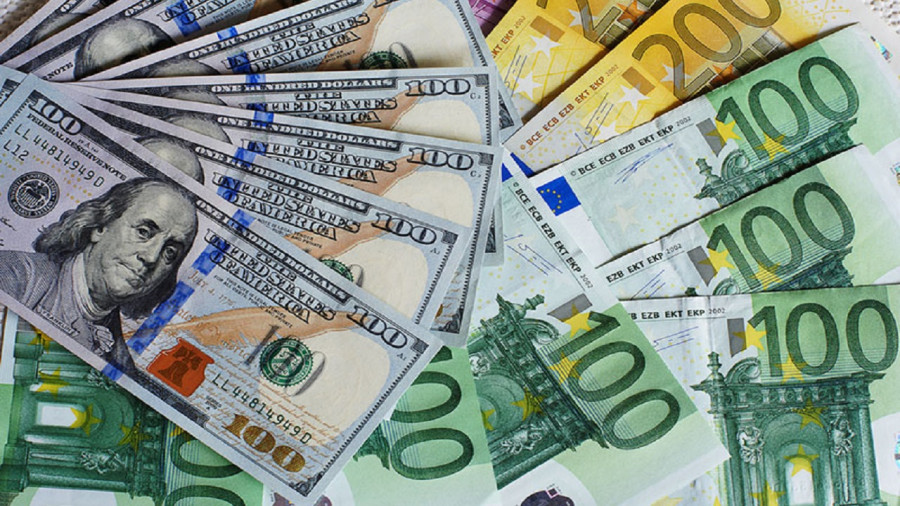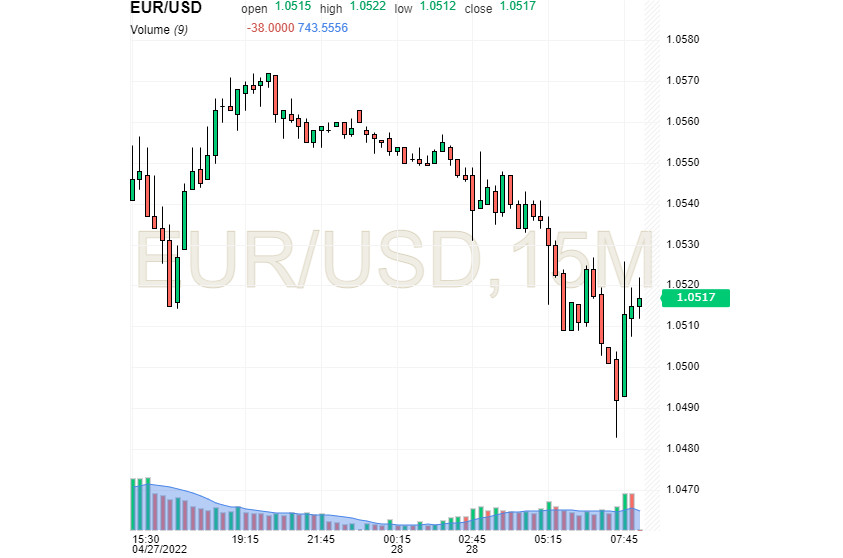

Analysts believe that the euro/dollar may be heading to parity amid rising geopolitical tensions. Apart from that, the euro remains weak due to the energy crunch in the euro region. Analysts at MUFG Bank believe that the energy crisis poses a serious threat to the euro. It may lead to parity in the EUR/USD pair in the near future.
The main catalyst for such a scenario is Russia's refusal to supply gas to so-called unfriendly countries in other currencies than the ruble, e.g. Poland. If Russia continues to cuts gas deliveries to Europe, gas prices are likely to double to €200 per 1 MWh. If this scenario comes true, it will have an extremely negative impact on the European economy and on the further trajectory of the euro.
Currently, the euro is unable to regain momentum due to uncertainty in the energy sector. On April 27, the EUR/USD pair slid sharply to 1.0550 amid a rally of the US dollar. It reached the lowest level since March 2017. The situation has not changed drastically today. On April 28, the pair was trading at 1.0517, making weak attempts to climb higher.

According to preliminary estimates, the EUR/USD pair has already lost 4.5% this month, logging the worst performance since 2015. The long-term target level has been 1.0600. However, the pair dampened below this level. It is unlikely to rise above this level in the short term. Notably, in 1999, after a decline to 1.0600 and prolonged consolidation, the EUR/USD pair sank by 20%.
The has approached one of the most historically important levels. A fall below the 1.0600 level is a rather crucial moment for the pair.
The main reason for the sharp drop in the pair was the protracted Russia-Ukraine conflict. However, the price became increasingly volatile after the termination of gas supplies to Poland and Bulgaria. Russian state-owned energy company Gazprom stopped supplying LNG to these countries as the Kremlin said it would accept payment only in rubles. Ursula von der Leyen, the President of the European Commission, said that Russia was trying to "blackmail" the bloc with gas. The eurozone remains heavily dependent on Russian gas. If Moscow cuts suppliers to more countries, the EU economy may face serious problems.
Apart from that, the euro is in the bears' claws because of the widening rate gap between the Fed and ECB. Market participants were seriously afraid that aggressive monetary policy tightening by central banks could affect the global economy.
As a result, the greenback has grown significantly amid high demand for safe-haven assets. Additionally, traders flock to the US currency because of fears about a recession in the global economy. The euro is lacking such strong drivers. This is why it is not surprising it remains an outsider. ING bank economists are also confident that the euro is moving towards parity with the US dollar. Analysts consider the grim economic prospects of the eurozone and significant differences in the monetary policy of the Fed and the ECB to be the reasons for the euro's weakness.
Investors are now revising their portfolios in favor of safe-haven currencies, mainly gold and USD. They are concerned about lockdowns in China and the geopolitical confrontation in Eastern Europe. The US currency benefits from the geopolitical uncertainty, as well as from the Fed's hawkish stance. At the same time, experts fear a deterioration in global economic expansion and a sharp drop in major currencies.